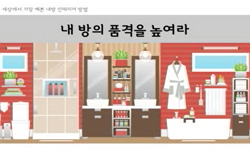Korean-Japanese architect Itami Jun that proceeded with primeval architecture based on analogue ideas in the digital era realizing nomad architecture is delivering a totally different meaning in the modern time. Not like the Japanese architectural com...
http://chineseinput.net/에서 pinyin(병음)방식으로 중국어를 변환할 수 있습니다.
변환된 중국어를 복사하여 사용하시면 됩니다.
- 中文 을 입력하시려면 zhongwen을 입력하시고 space를누르시면됩니다.
- 北京 을 입력하시려면 beijing을 입력하시고 space를 누르시면 됩니다.

`만남이론` 관점으로 본 이타미 준의 실내공간 표현특성 = The Expressive Characteristics of Itami Jun`s Interior Space Seen from the Viewpoint of `Theory of Meeting`
한글로보기부가정보
다국어 초록 (Multilingual Abstract)
Korean-Japanese architect Itami Jun that proceeded with primeval architecture based on analogue ideas in the digital era realizing nomad architecture is delivering a totally different meaning in the modern time. Not like the Japanese architectural community equipped with rich technologies showed state-of-the-art architecture after 1980s, Itami Jun’ formative consciousness intending to assimilate nature from the original position of things is thought to have started from the relationship with Korean-Japanese painters leading MONO-HA desiring to look at the world as it is and approach the source of existence. The purpose of this study is to analyze the spatial characteristics from the viewpoint of ‘Theory of Meeting’ which is the essence of the work theory of Lee UFan that made the theoretical foundation of MONO-HA to understand Itami Jun’s architectural space in the ideological aspect. Although the characteristics of marginal men appearing in Itami Jun’s architectural space as others located on the boundary between Korea and Japan, art and architecture, and functions are valuable research objects, they have not been studied in the aspect of source, so it is needed to research his works and the source of the spatial ideas that led his works. Based on Theory of Meeting claiming that the world becomes the place of experience by the medium of objet which is the structure of meeting, and that human beings can meet the truly opened world by self-awareness through body, the expressive characteristics of Itami Jun’s interior space was analyzed. As a result of the analysis, it turned out that Itami Jun’s interior space actively expressed Theory of Meeting on the unity of structure and space, and on the trans-boundary by the medium of objet. Conclusively, this study suggests that, in the reality of the modern interior design full of technology-intensive designs, analogue approach moving in the opposite way from technologies could be a better expressive method of design delivering the fundamental human emotions.
목차 (Table of Contents)
- Abstract
- 1. 서론
- 2. 만남이론의 의미와 특성
- 3. 이타미 준의 건축철학과 만남이론
- 4. 이타미준 실내공간에 나타난 만남이론의 표현특성
- Abstract
- 1. 서론
- 2. 만남이론의 의미와 특성
- 3. 이타미 준의 건축철학과 만남이론
- 4. 이타미준 실내공간에 나타난 만남이론의 표현특성
- 5. 결론
- 참고문헌
동일학술지(권/호) 다른 논문
-
낙후된 골목의 효과적인 재생을 위한 정체성의 필요성과 구성 요소에 관한 사례연구
- 한국실내디자인학회
- 박건우(Park, Kun-Woo)
- 2017
- KCI등재
-
노인 주거시설의 위생공간을 중심으로 고령자의 건강과 무장애 생활환경을 위한 인증 방법에 관한 연구
- 한국실내디자인학회
- 홍사철(Hong, Sa-Chul)
- 2017
- KCI등재
-
- 한국실내디자인학회
- 김선영(Kim, Sunyoung)
- 2017
- KCI등재
-
네트워크 분석방식 선택에 따른 복잡계 모형과 공간구문론의 상호검증
- 한국실내디자인학회
- 김석태(Kim, Suk-Tae)
- 2017
- KCI등재





 ScienceON
ScienceON DBpia
DBpia






